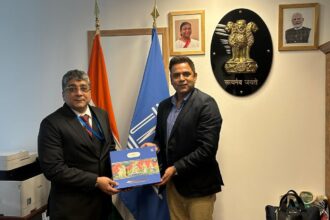The revised GST 2025 rate brings major relief on essentials like food items, healthcare, and farm equipment, while making luxury goods and sin goods costlier.
New Delhi: The Goods and Services Tax (GST) Council has announced the biggest revamp since GST was launched in 2017. From September 22, tax rates on many everyday essentials, farm equipment, healthcare items, cars, and even electronics will be reduced. At the same time, luxury goods and sin products will attract higher taxes.
The 56th GST Council meeting, chaired by Finance Minister Nirmala Sitharaman and supported by all states, has simplified the system into two main slabs: 5% for essentials and 18% for most other goods and services. Luxury and sin goods will now be taxed at 40%.
This change comes just ahead of the festive season, making consumer spending more affordable while also aiming to support farmers, MSMEs, and the broader economy.
What Will Be Cheaper Under the New GST Rules?
The new GST structure will touch almost every aspect of daily life—household needs, farming, healthcare, education, and even automobiles.
| Category | Items | Old GST Rate | New GST Rate |
|---|---|---|---|
| Daily Essentials | Hair oil, shampoo, toothpaste, soap, shaving cream, toothbrushes | 18% (or 12% for some) | 5% |
| Butter, ghee, cheese, dairy spreads | 12% | 5% | |
| Pre-packaged namkeens, bhujia, mixtures | 12% | 5% | |
| Utensils | 12% | 5% | |
| Feeding bottles, napkins for babies, clinical diapers | 12% | 5% | |
| Sewing machines and parts | 12% | 5% | |
| Uplifting Farmers & Agriculture | Tractor tyres & parts | 18% | 5% |
| Tractors | 12% | 5% | |
| Specified bio-pesticides, micro-nutrients | 12% | 5% | |
| Drip irrigation systems & sprinklers | 18% | 5% | |
| Agricultural, horticultural & forestry machines (soil preparation, sowing, harvesting, threshing) | 18% | 5% | |
| Relief in Healthcare Sector | Individual health & life insurance | 18% | Nil |
| Thermometer | 18% | 5% | |
| Medical-grade oxygen | 12% | 5% | |
| Diagnostic kits & reagents | 12% | 5% | |
| Glucometer & test strips | 12% | 5% | |
| Corrective spectacles | 12% | 5% | |
| Affordable Education for Students | Maps, charts, globes | 12% | Nil |
| Pencils, sharpeners, crayons, pastels | 12% | Nil | |
| Exercise books & notebooks | 12% | Nil | |
| Erasers | 5% | Nil | |
| Automobiles Made Affordable | Petrol & petrol-hybrid, LPG, CNG cars (≤1200cc & 4000mm) | 28% | 18% |
| Diesel & diesel-hybrid cars (≤1500cc & 4000mm) | 28% | 18% | |
| Three-wheeled vehicles | 28% | 18% | |
| Motorcycles (≤350cc) | 28% | 18% | |
| Motor vehicles for goods transport | 28% | 18% | |
| Savings on Electronics & Appliances | Air conditioners | 28% | 18% |
| Televisions above 32” (including LED & LCD TVs) | 28% | 18% | |
| Monitors & projectors | 28% | 18% | |
| Dishwashers | 28% | 18% |
What Will Become Costlier Under the New GST Rules?
| Items | Old GST Rate | New GST Rate |
|---|---|---|
| Aerated drinks, soft drinks, and carbonated beverages | 28% | 40% |
| Pan masala and tobacco-based products | 28% (plus cess) | 40% (deferred until cess ends) |
| Premium apparel and branded luxury clothing | Varied (e.g., 12% above ₹1,000) | 18% |
| High-end vehicles, SUVs, luxury cars, and hybrid cars (beyond standard limits) | 28% | 40% |
| Five-star hotel tariffs above ₹7,500 per night | 18% | 18% (no change) |
Also Read: Government Slashes GST on Essentials, Retains High Tax on Luxury and Sin Goods
GST 2025 Reforms: Your Questions Answered
- From when will the new GST rates apply?
The revised GST rates kick in from September 22, 2025, following the decisions made at the 56th GST Council meeting.
- Will this reduce my household expenses?
Yes. Everyday essentials like shampoo, toothpaste, soap, butter, cheese, snacks, and utensils are now cheaper. Students benefit too — notebooks, pencils, and maps are completely tax-free.
- Which products will get costlier?
Non-essential and luxury items face higher taxes. This includes aerated drinks, pan masala, tobacco, SUVs, luxury cars, premium hotel stays, and branded clothing. These now fall under the 40% tax bracket.
- Are cars really cheaper now?
Absolutely. Small cars, two-wheelers, autos, and goods vehicles now attract 18% GST instead of 28%, lowering their on-road prices. However, SUVs and luxury hybrids are costlier at 40%.
- What about healthcare and insurance?
Good news: health and life insurance premiums are now GST-free. Essential medical items like oxygen, diagnostic kits, and spectacles are taxed at only 5%.
- Will these reforms impact the economy?
Yes. Economists expect GDP growth to rise by 1–1.2% and inflation to ease by around 1%. Markets have already reacted positively, showing confidence in the reforms.
Also Read: Cian Agro Shares Hit ₹773.35Cr. amid Nepotism Allegations










